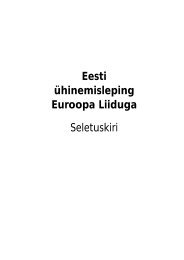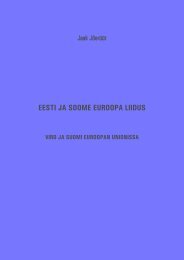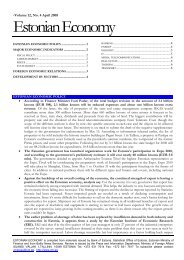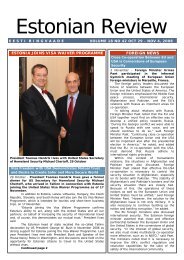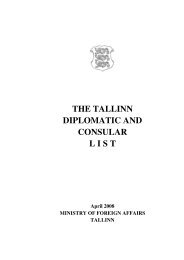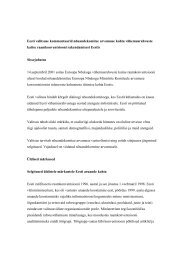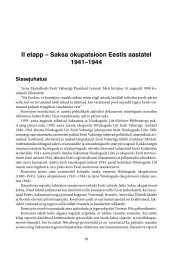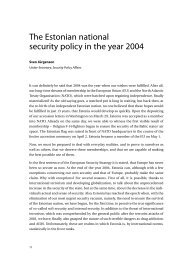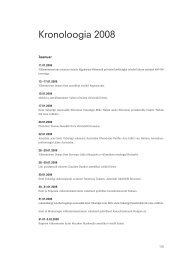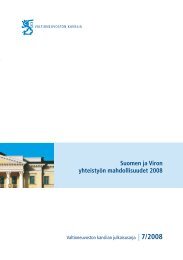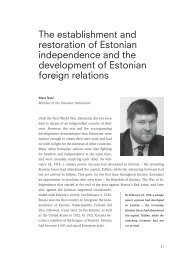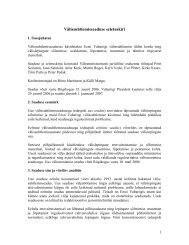Opportunities for Cooperation between Estonia and ... - Valitsus
Opportunities for Cooperation between Estonia and ... - Valitsus
Opportunities for Cooperation between Estonia and ... - Valitsus
You also want an ePaper? Increase the reach of your titles
YUMPU automatically turns print PDFs into web optimized ePapers that Google loves.
APPENDIX 4<br />
ENERGY<br />
Today, long-term energy security is the key to security <strong>and</strong> the economic<br />
competitiveness of every country or region. A critical issue with regard to<br />
competitiveness is the price of the energy source material.<br />
Energy security is ensured if a country or region:<br />
• has access to a range of diverse primary energy sources;<br />
• possesses sufficient production capacity <strong>for</strong> the generation of secondary<br />
energy complete with a reliable back-up system; <strong>and</strong><br />
• has energy transmission <strong>and</strong> distribution systems that operate problemfree<br />
without disruptions.<br />
Typical of the energy sector throughout the world is continual consolidation <strong>and</strong><br />
mutual inter-dependence. Production is affected, most of all, by the increasing<br />
dem<strong>and</strong> <strong>for</strong> energy, the operation of the market mechanisms <strong>and</strong> the highlevel<br />
politization of issues related to the environmental effects of energy. The<br />
biggest problem with energy supplies in Europe is the increasing dependence<br />
on external energy source materials.<br />
In Europe, the overriding concern is clearly the generation of electricity. The<br />
energy policy of the European Union rests on three pillars: energy security,<br />
sustainable development <strong>and</strong> economic competitiveness. In the future,<br />
electricity generation may reduce dependence on oil <strong>and</strong> gas while considerably<br />
limiting greenhouse gas emissions.<br />
The <strong>Estonia</strong>n <strong>and</strong> Finnish grids are inter-linked with a subsea 350 MW Estlink<br />
DC cable. Plans are now being made <strong>for</strong> laying an 800 MW Estlink 2 subsea<br />
cable that would permit the integration of electricity markets <strong>and</strong> so stabilize<br />
prices on the deregulated market. However, the most important qualitative<br />
change brought about by Estlink 2 is that only then can <strong>Estonia</strong> <strong>and</strong> Finl<strong>and</strong> be<br />
regarded as a single area in terms of energy security.<br />
It is in the best interest of both <strong>Estonia</strong> <strong>and</strong> Finl<strong>and</strong> that competition on<br />
the energy markets is not distorted by electricity imported from outside the<br />
European Union in which the cost price does not include the price of carbon<br />
dioxide emission quotas. Such a situation would not be compatible with the<br />
purpose of the emission quotas defined by the EU. Moreover, it would place<br />
32



